
This is the amazing story of Dr Krishna M Ella, a scientist who turned into a serial entrepreneur.
Krishna Ella, chairman and managing director of Bharat Biotech International Ltd, is one of the pioneers in molecular research in India and the man behind the Knowledge Park at Genome Valley in Hyderabad.
It was his master's degree from the University of Hawaii, a doctorate from the University of Wisconsin-Madison, and further teaching and research experience at the Medical University of South Carolina-Charleston that triggered the scientist in him.
Back in India in 1996, the scientist became a serial entrepreneur successfully, showing that a scientist can also become a successful businessman.
After setting up Bharat Biotech in Hyderabad, he advised the former Andhra Pradesh chief minister N Chandrababu Naidu and the then State industries secretary Sheila Bhide to set up a Biotech Park to provide impetus to the growth of knowledge-based industries.
It helped in the creation of Genome Valley in Hyderabad leading to the development of more than 100 knowledge-based biotech companies surrounding Bharat Biotech.
In this exclusive interview, Krishna Ella talks about his journey as a scientist and a serial entrepreneur.
. . .
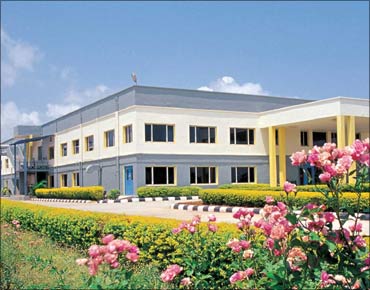
Childhood in a village in Tamil Nadu
I am from a village near Thiruthani in Tamil Nadu and my father was a farmer. We were not wealthy farmers, just middle class. There were no businessmen or entrepreneurs or professionals in the family; only farmers.
After my schooling, I decided to study agriculture which my father didn't approve of. He felt nobody became a farmer just by studying agriculture! But I got so interested in the subject and wanted to be a farmer.
After my studies, as there was economic pressure, I decided to work with Bayer (a chemicals and pharmaceuticals company) in their agricultural division. I was not interested in research at that time as I was not happy with the kind of research that was going on in the country.
. . .

Fellowship to study in the US
While working for Bayer, I got the Rotary's Freedom from Hunger Fellowship to study in the United States. I would not have gone to study there if not for the scholarship.
I did my master's at the University of Hawaii and my PhD at the University of Wisconsin-Madison. My studies were basically on molecular biology.
It was thought provoking to listen to National Science Academy winners and Nobel laureates at the University, and those lectures changed my thinking process in appreciating science. After completing Ph.D., I chose to move to the Medical University of South Carolina-Charleston for further research and teaching.
My university helped me look at everything from a new light and not follow the beaten path.
. . .
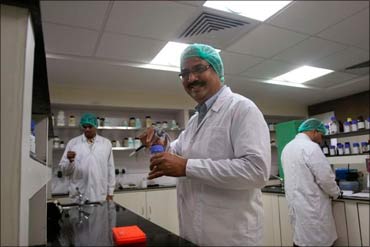
Decision to come back to India
Two women in my life made me take the decision to come back to India. My wife, Suchitra, and my mother.
Suhitra wanted to come back to India. My mother told me, 'Son, you only have a 9-inch stomach and how much ever money you make, you can't eat more than that. You come back and do whenever you want, I will see to it that you get food! As long as I am alive, you will not starve.'
I had to come back after that. By saying I could do whatever I wanted to do after returning, she encouraged me to take risks.
My wife also gave me the option to do whatever I wanted to. We went to the US with four suitcases and came back with a 40-foot container!
I was ready to take risks in my life. That was in 1996.
. . .

Back in India with a business plan for Hepatitis vaccine
In 1995, I started conceptualising a Hepatitis vaccine. That was because I was working on yeast molecular gene.
My expertise was taking the gene out of yeast and putting it back. There was a heavy demand for the medicine in India.
I set up a small lab in Hyderabad with the medical equipment I had brought along with me in my 40-foot container and started producing the protein.
I didn't get the funding I was expecting, as at that very time another biotech company had submitted a Rs 40-crore (Rs 400 million) proposal and mine was for Rs 12.5 crore (Rs 125 million). So they felt I, a scientist, didn't know what I was doing.
My proposed price for the vaccine was $1 when the going rate was $35 to $40. I was looked at with suspicion as the proposed cost of my project and the price of the vaccine were so much less!
So I went to another venture capital company. There was a catch there too. I found that nobody trusted a scientist as they all felt a scientist cannot be a good entrepreneur.
I also found that unless you bloat your proposal to Rs 100 crore (Rs 1 billion) or so, you wouldn't get any attention.
. . .
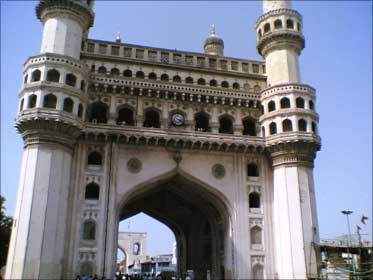
Can a scientist be an entrepreneur?
I find that science and business are very similar: for both, you plan and implement ideas. If it is hypothesis in science, it is business plan in business. If its risk analysis in business, its testing the methods in science.
There are dogmas against high technology and high capital intensive projects. What I had planned was high technology and high capital intensive. The third dogma was the feeling that Indians could not do it. Fourth dogma was the belief that a scientist could not think like an entrepreneur.
When all the venture capitalists I went to rejected my proposal, I went to IDBI as I wanted a Rs 2-crore (Rs 20 million) equity.
I requested for sweat equity but I was told that they didn't give sweat equity to any company. One person then suggested that he would give me sweat equity once the vaccine is licensed. That is how it all began.
. . .
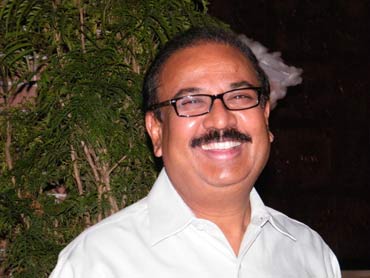
A scientist becomes an entrepreneur!
We, at Bharat Biotech, became the second company funded by IDBI and the technology board after Shantha Biotech.
We started Bharat Biotech with a total cost of Rs 12.5 crore, out of which Rs 5 crore (Rs 50 million) was equity (promoters, Rs 3 crore and IDBI, Rs 2 crore). The balance capital was funded by way of loan from Technology Development Board (Department of Science and Technology) and IDBI Bank.
That was how I became an entrepreneur.
The testing was going on at that time. In three years' time, in January 1999, then President Dr Abdul Kalam launched the vaccine.
. . .

350-400 million Hepatitis vaccine doses today
The cost of Hepatitis B vaccine child dose is approx Rs 4 per dose. We supplied 35 million doses for the national immunization programme to the government of India at a price of Rs 10 per dose.
We supply 10 million doses to Pakistan, to UNICEF and also to Latin American markets. So far we have supplied 350-400 million doses to more than 65 countries.
We recovered our entire investment of Rs 12.5 crore in two years. Instead of declaring a dividend, what we did was to invest the money in R&D and capital outlays.
Every year, we have been making Rs 15-20 crore (Rs 150-200 million) in profit. The turnover of Bharat Biotech is around Rs 300 crore (Rs 3 billion) now.
. . .

Biotech knowledge park in the Genome Valley
In 1996, I had made a presentation to Chandrababu Naidu, the then chief minister of Andhra Pradesh, on the need to have a biotech knowledge park.
We requested for land from APIIC (Andhra Pradesh Industrial Infrastructure Corporation) where we should set up only knowledge industries and not polluting ones.
A Government Order was passed accordingly as it was a new concept in India.
Bharat Biotech's Hepatitis vaccine plant was the first one to come up there, followed by the ICICI Knowledge Park. So many other industries came later. Finally it culminated as Genome Valley.
We were the first to enter the Valley. Now, more than 100 knowledge-based industries are there, from multinationals like DuPont to Monsanto to ITC to some smaller ones. And this paved the way for the growth of knowledge-based industries.
Genome Valley has become very important as far as biotech parks are concerned in India. It catalysed the very idea of such parks.
I would say the real biotech industry is in Hyderabad, not in Bengaluru. It is the biotech industries from Hyderabad that are contributing 50 per cent to the industry in the country, followed by Pune.
. . .
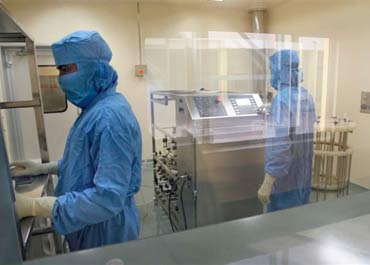
Knowledge-based industry in India
In the world, the number 1 to 3 positions are held by the United States as far as knowledge-based industries are concerned.
All the other countries are nowhere near them. It is because they recognised this branch of science very early and the academic researches are very intense, and product- and societal-oriented, unlike in India.
Public problems do not figure in academic research in India. On the other hand, whenever there is a public problem in the US, scientists' research moves towards the disease and the problem.
There is a continuity of science in many institutes. Unfortunately, we haven't solved one public health or agricultural or disease problem so far.
. . .

Projects Rotavirus, malaria vaccines and more . . .
I have nine molecules in various stages of clinical trials. This is worth about Rs 350-400 crore (Rs 3.5-4 billion).
In the last one year, our significant contribution has been the Rotavirus vaccine. It has undergone the phase II clinical trial. It is being developed by a consortium, led by Bharat Biotech, which includes DBT, AIIMS, NII, CDC, SAS, NIH, Stanford University, PATH, etc. Bharat Biotech's IND Rota is also the second Investigational New Drug Application filed in India. The first is Lysostaphin.
Our malaria vaccine is currently in a development stage and is being developed in partnership with International Centre for Genetic Engineering and Biotechnology (ICGEB).
Bharat Biotech is the first company to manufacture preservative-free vaccine for a multinational like Wyeth. This provided us with the confidence that we can also produce our own preservative-free vaccine.
We are also making thimerosal-free vaccines in typhoid and rabies.
We also launched this year HNVAC, India's first cell-cultured swine flu vaccine. HNVAC is the only developing-world flu vaccine to be manufactured in cell culture, in a highly sterile and controlled manufacturing process, instead of eggs.
Bharat Biotech has a lot of products in the pipeline like the dengue vaccine, chickungunya vaccine and staphylococcus aureus vaccine.
We also have the typhoid conjugate programme. We are also moving to specialized vaccines. For example Rabies, Japanese Encephalitis vaccine, etc.
In another six months' time, we will launch a cardiovascular drug, a Recombinant Thrombolytic Agent being developed for the first time in the world (THR-100). It is the first by an India pharmaceutical company. It is considered better than Tissue plasminogen activator (TPA).
. . .

Animal Welfare Project
My Rs 100 crore (Rs 1 billion) project in animal welfare started with a visit to a village in Anantapur.
I saw a bucket full of water in a house. When the son of the lady of the house asked for a bath before going to school, I saw the mother refusing him a bath.
When I asked her why she didn't give a bath to her son, she replied that she had only one bucket of water and she wanted to give a bath to the cow.
Their livelihood and the child's education both depended on the milk the cow gave. I was touched by the idea of one cow supporting the entire family when the entire village was affected by drought.
I felt I should do something for animals like cattle, goats, sheep, etc.
I am looking at how to help large animals by finding out the major and minor diseases that may affect them and destroy the dairy industry. If a cow gets a disease, it will die in 48 hours, and a cow that gives Rs 300 cash every day is gone!
I have found that farmers who are not committing suicide are the ones who have one or two cows. Those who rely 100 per cent on agriculture resort to suicide. Those with 50 per cent income from agriculture and 50 per cent from dairy survive.
. . .

R&D: A neglected area in India
According to me, every company has to start with R&D, then manufacturing and after that only comes marketing. But in India, R&D is the most neglected area.
Here, they want to build a company and only then think of R&D. Scientists working in the company are not delivering because they are working to keep their jobs intact. In the process, nobody takes risks; neither the scientists nor the company. We are not creating a risk-taking culture.
I feel technology should reach the common man and no citizen should be deprived of healthcare solutions. Vaccines have to become affordable to the common man. When I sell at a low price, multinationals and politicians try to kill it by saying it might be of low quality.
If I sell a vaccine at Rs 100, it is good and if I sell it at Re 1, it is described as a bad one.
I am an entrepreneur now and I look at the problems the Indian society faces and then convert that into a business opportunity.
. . .